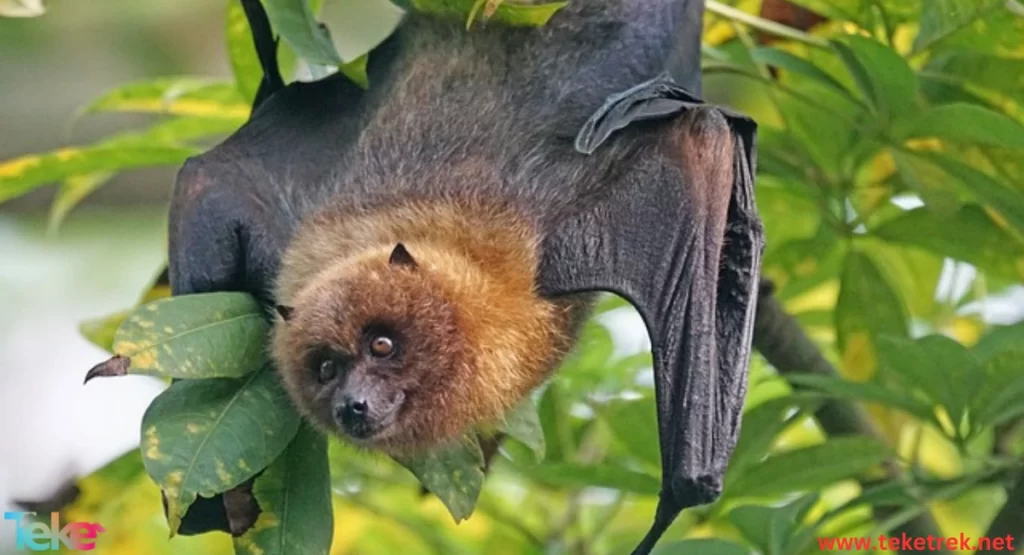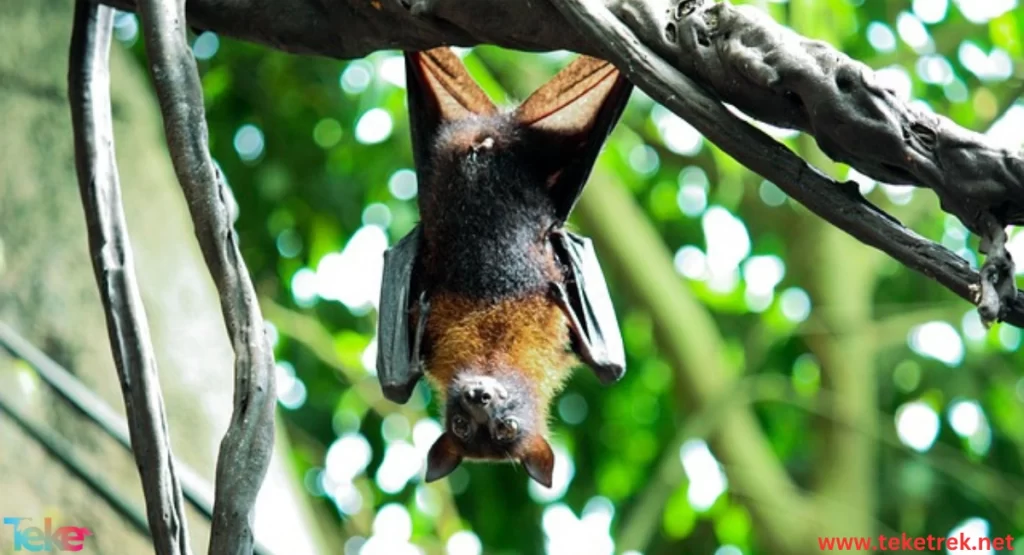The Bat is creature of the night, active after darkness falls, spending the day in sleep. A mammal belonging to the bat family, it is often described as a sinister and frightening creature. Despite being a source of pessimism for many, it is also considered a wonderful and important bird for humans and the environment.
We will talk about the bat in this article on TekeTrek website. Follow along with us.

Key Points to Know About The Bat
The Bat Scientific Name: Chiroptera.
- Belonging to the mammal group, bats are the only ones capable of flying skillfully.
- They are known by various names including “khafdood,” “khonfosh,” or “watawat.”
- Bats possess exceptional abilities to navigate and locate positions efficiently in the dark.
- Bats use their bodies for predation and flight.
- They have a highly sensitive hearing and sense of smell, aiding them in hunting for prey and avoiding dangers.
- Bats live for very long periods ranging from 20 to 30 years.
- Bats have a strong immune system capable of withstanding infections.
- Bats can move from one place to another in addition to flying, by walking, crawling, jumping, and even swimming if necessary.
- It’s important not to touch or play with bats as they carry bacteria and viruses harmful to humans and are capable of biting and piercing the skin.
- Some bat species can reach speeds of up to 150 kilometers per hour.
- Bats are extremely clean animals and spend a lot of time grooming themselves and cleaning their fur and ears.
- Bats sleep upside down due to the size of their wings, which prevents them from sleeping normally. Because they lack protection against predators, they hang in hard-to-reach places.
- Most bats enter a state of hibernation for long periods, during which their body temperatures may drop to 43 degrees Celsius.
- To stay warm, bats gather in isolated places such as caves, using their wings as blankets and congregating in colonies.
- There are more than 1,200 species around the world.
- Bats carry a range of viruses that can infect other mammals, including at least 200 viruses. Some of these viruses cause human respiratory diseases such as SARS and coronavirus.
- Despite bats being significant carriers of diseases, they themselves are not affected by them due to the exercise of flying, which helps them get rid of diseases and maintain good health.
- The presence of bats in an area produces a foul odor, and bat droppings and waste are called guano.
Appearance of Bats
- Bats possess long and extremely thin wings compared to other birds, consisting of a membranous structure extending between the forelimbs and hind limbs, which enables them to fly.
- The body of a bat is usually small compared to the size of its wings, varying in size among different species from small to large. The smallest bat measures between 29 and 33 millimeters in length and weighs about two grams, while the largest bat has a wingspan of 1.5 meters and weighs approximately 1.2 kilograms.
- Bats have two large ears that help them sense sound and sound waves emitted during flight.
- Bats have very small sharp teeth in their mouths that enable them to consume their food and assist them in capturing and tearing apart prey. The number of teeth in a bat’s mouth ranges from 24 to 38. The tongue is very long, allowing the bat to wrap it around its chest cavity when not in use for eating or drinking.


- Bat noses are small in size and located at the front of the head.
- Bats have one-way valves in their arteries that prevent the backflow of blood, explaining their ability to hang upside down while blood flows to their heads.
- Some bat species have a light fur on their skin that helps them control their body temperature.
- The colors of bats vary between brown, gray, black, and dark brown, adapting to their surrounding environments.
- Some bats have large eyes, while others have small bead-like eyes. Although they can see objects, vision is not their primary sense.
- The primary sense bats use to locate objects is echolocation, relying on sound echoes to search for food (prey).
- Some bats hunt their prey more efficiently, with bats with longer tongues producing much quieter sounds than ordinary bats, allowing them to sneak up on prey.
- The fur covering the bat’s body helps maintain its temperature and keep it alive.
- Bats have four long fingers and a thumb, with short and sharp claws covered by a thin layer of skin.
In short, the bat, a perfect nocturnal hunter, plays its part in nature.






